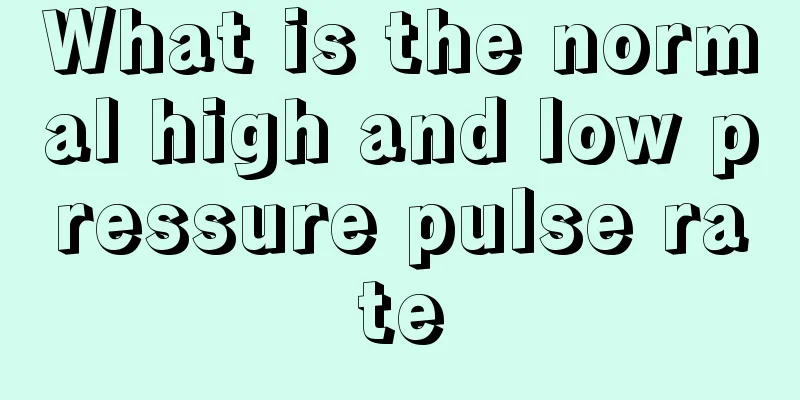What is the normal high and low pressure pulse rate

|
In fact, in life, many people do not pay much attention to the normal value range of high and low pressure pulses. But in fact, if these high and low pressure pulses change, it may also be a manifestation of physical illness, so it is necessary to understand these normal value ranges. 1. In normal life, we need to understand the normal values of various indicators of the human body. The human body's blood pressure has a normal range of high and low pressure values. But many people don’t know this knowledge very well. In order to better protect our health, we need to understand this knowledge. So what is the normal range of high and low blood pressure in the human body? 2. A certain pressure is required to transport blood to all parts of the body, and this pressure is blood pressure. The lateral pressure of blood in blood vessels on the unit area of blood vessel wall, that is, pressure. Since blood vessels are divided into arteries, capillaries and veins, there are arterial blood pressure, capillary pressure and venous blood pressure. The blood pressure usually referred to is arterial blood pressure. When blood vessels dilate, blood pressure drops; when blood vessels constrict, blood pressure rises. Systemic arterial blood pressure is referred to as "blood pressure" (BP). Blood pressure is the pressure exerted on the blood vessel walls when blood flows in the blood vessels. It is the driving force that pushes blood to flow in the blood vessels. When the ventricle contracts, blood flows from the ventricle into the artery. At this time, the pressure of blood on the artery is the highest, which is called systolic blood pressure (SBP). The ventricle relaxes, the elasticity of the arteries shrinks, and the blood continues to flow forward slowly, but the blood pressure drops. The pressure at this time is called diastolic blood pressure (DBP). 1. Normal blood pressure: systolic pressure <130mmHg, diastolic pressure <85mmHg; 2. Ideal blood pressure: systolic pressure <120mmHg, diastolic pressure <80mmHg; 3. Upper limit of normal: systolic blood pressure 130-139 mmHg, diastolic blood pressure 85-89 mmHg; 4. Blood pressure standard: under 70 years old, 90-130/60-80 mmHg; 70 years old and above, 90-150/60-90 mmHg. |
<<: Symptoms of herpes simplex encephalitis
>>: What is the cause of hypoxic-ischemic encephalopathy in adults
Recommend
How to detect breast cancer
Breast cancer is a malignant tumor formed by the ...
What are the causes of liver cancer
Liver cancer is one of the most common malignant ...
The reason why colorectal cancer is difficult to detect in its early stages
Cancer is basically the result of gradual genetic...
Is vitiligo contagious?
Vitiligo, a skin disease, does not cause pain to ...
What is the reason why ovarian tumors are prone to recurrence
The arrival of diseases such as ovarian tumors is...
What are the early symptoms of bladder cancer in women
Bladder cancer is a disease that everyone should ...
Can I take a foot bath while breastfeeding?
In life, both men and women like the health-prese...
What are the hazards of silicone oil to the scalp
Speaking of silicone oil, many people are very un...
The difference between purple tooth black and garnet
Many people don't know the difference between...
What to do with progressive cerebral infarction?
Nowadays, cerebral infarction is a relatively com...
What food should I eat for chronic antral gastritis
Chronic antral gastritis is a type of gastritis. ...
What tests do liver cancer patients need to take? Two factors that affect the prognosis of liver cancer
The incidence of liver cancer has been very high ...
The hazards of plaster pillows
Gypsum pillows are also a type of pillow that mor...
The difference between miscarriage and abortion
Miscarriage and abortion have both similarities a...
What does liver ca mean? Abbreviation for liver cancer
Liver CA is actually an abbreviation for liver ca...









